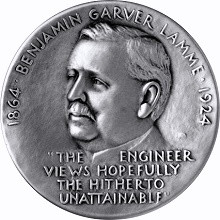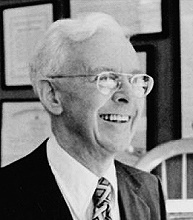|
June 1960 Radio-Electronics
 [Table of Contents] [Table of Contents]
Wax nostalgic about and learn from the history of early electronics.
See articles from Radio-Electronics,
published 1930-1988. All copyrights hereby acknowledged.
|
As reported in this 1960
Radio-Electronics magazine infomercial, Bell Laboratories engineer Harold
S. Black conceived of the negative feedback principle while commuting to work, which
revolutionized signal amplification and enabled the expansion of telephone and TV
networks, transoceanic cables, and precise military radar and missile-control systems.
Black's achievement, along with his 60 U.S. patents, earned him the 1957 Lamme Medal
from the American Institute of Electrical Engineers. This accomplishment reflects
the innovative spirit shared by Bell Telephone Laboratories scientists and engineers
who continue to explore new techniques in switching, transmission, and instrumentation
for information-bearing signals, making communications an inspiring challenge for
creative minds.
Bell Telephone Laboratories Ad
  Harold S. Black, Lamme Medalist Harold S. Black, Lamme Medalist
A Man Wins a Medal ... And Strengthens a Philosophy
The search for the "hitherto unattainable" sometimes ends in strange places.
For years Bell Laboratories engineer Harold S. Black pondered a problem: how
to rid amplifiers of the distortion which unhappily accumulated as signal-transmission
paths were made longer and amplifiers were added. There had been many approaches
but all had failed to provide a practical answer.
Then one day in 1927 the answer came - not in a research laboratory, but as he
traveled to work on the Lackawanna Ferry. On a newspaper, Mr. Black jotted down
those first exciting calculations.
Years later, his negative feedback principle had revolutionized the art of signal
amplification. It is a principal reason why telephone and TV networks can now blanket
the country, the transoceanic cable is a reality, and military radar and missile-control
systems are models of precision.
For this pioneer achievement, and for numerous other contributions to communications
since then (some 60 U. S. patents are already credited to him), Mr. Black received
the 1957 Lamme Medal from the American Institute of Electrical Engineers. He demonstrated
that the seemingly "unattainable" often can be achieved, and thus strengthened a
philosophy that is shared by all true researchers.
He is one of many Bell Telephone Laboratories scientists and engineers who have
felt the challenge of telephony and have risen to it, ranging deeply into science
and technology. Numerous medals and awards have thus been won. Two of these have
been Nobel Prizes, a distinction without equal in any other industrial concern.
Much remains to be done. To create the communication systems of the future, we
must probe deeper still for new knowledge of Nature's laws. We must continue to
develop new techniques in switching, transmission and instrumentation for every
kind of information-bearing signal. As never before, communications offer an inspiring
challenge to creative men.
Bell Telephone Laboratories World Center of Communications Research and Development

|












